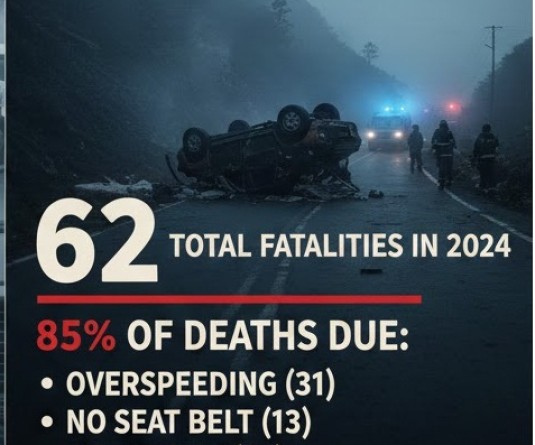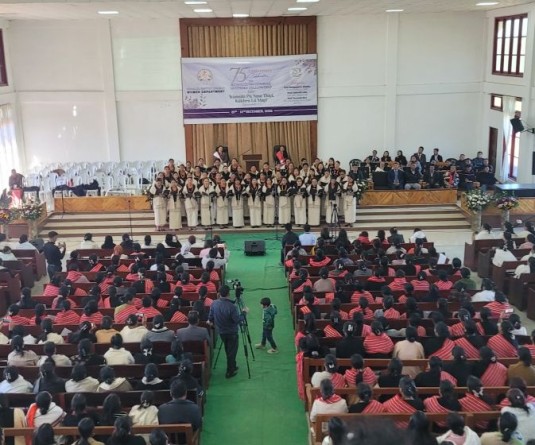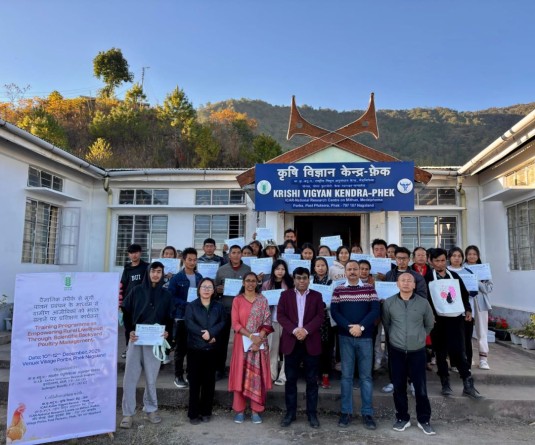
Morung Express News
Dimapur | September 21
The investigation into the events and the causes that led to the violent upheaval of September 1 in Dimapur reported to be over, the four-member Fact Finding Committee, constituted in the aftermath, held a meeting with the civil society and Editors of the leading dailies on Friday. The purpose of the meeting, held at Circuit House, Dimapur, was primarily to elicit suggestions from the civil society and media on, “How such incidents can be avoided in future.”
The committee headed by retired Director General, Prisons and Home Guards, NN Walling as Convenor, retired Commissioner and Secretary KN Ngullie and retired Secretary to the Government LT Konyak as members; and Secretary Home Wepretso Mero as member secretary, noted points and suggestions put forward during an interactive discussion stretching over three hours long.
The meeting was not bereft of confusion however. The confusion was over whether the meeting was called to seek accounts of the violence of September 1, assessment of damage to property or for seeking suggestions for hammering out strategy to avoid recurrence of clashes tribal in colour. Committee Convenor, NN Walling cleared the mist stating that the committee’s intent was to seek suggestions aimed at working towards formulating mechanism against recurrence of such incidents.
The representatives from the civil society, most of whom were witness to the violence, all the same, pointed out the tardy reaction of the district administration and the police to quell the mob clash. Toeing a safe path, the Convenor maintained the Committee’s position that the intent of the meeting was not to go out on a witch hunt. It is the Committee’s intention that “We don’t want to discuss the good work or bad work of the (district) administration that day,” Walling stated. On the alleged failure of the administration to control the situation, Walling added, “We have in our possession the facts,” the report of which will be submitted to the government.
An obvious failure pointed out were the inability of the administration to declare the enforcement of CrPC 144 at the site on time. Prohibitory orders were reported to have been officially enforced at 1:00 pm before the mob clash occurred (or during the period between the vandalism at Niathu Resort the mob clash). But it could be declared only by dusk. The other was the late mobilization of riot police in full gear and further, failing to acknowledge information that was sounded to the administration. “The police had guns, of course, but the rioters were well aware the police will not resort to firing,” one Naga Council member stated.
The idea of community policing, which took a beating following the incidents of August 31 and September 1, also centered in the discussion. However, the idea was supported citing it holds relevance.
Savi Liegise, President of Naga Council Dimapur called for laying down strict guidelines by the government, while borrowing aspects of its enforcement from places where it is successfully working. But it was made very clear that no community policing can replace a professional police force. Liegise further pointed out the misuse of networking media via the internet. “The youths need to break away from the virtual world where they throw hate words at each others without knowing the reality outside,” he said, while adding that the government must implements laws to deal with misuse of the internet.
Controlling the mushrooming of myriad trade unions and associations was another. On this, the house was almost unanimous calling for legislation in the State Assembly to curb it.
“When governance is weak, the administration naturally will be weak,” said Monalisa Changkija, Editor of Nagaland Page. Tracing back some few decades, Changkija recalled that back in the 60’s and 70’s, when Nagaland as a state was still at its infancy, governance was bound by certain values. “That is sadly missing today.” Even if the government provides the best of modern amenities, “We also need a value system… and that value system should be provided by the government,” stated Chankija taking a truth-seeking stance.
Sadly, Changkija said, the present Naga society is thinly woven around tribal affinity, which can tear anytime. “We have so many unions based on our allegiance to a tribe or village… what, where is our allegiance.” Taking forward the point, Changkija took the instance of the many Naga students’ bodies formed outside the state. At one time, there was only one Naga students’ body in Shillong, so was it in Delhi, respectively working as close-knit units for the welfare of Nagas in general. Now, there are so many Naga students unions based on tribal allegiance. This kind of tribal associations has in part had a negative affect on the Naga society, though the intent was noble in nature, Changkija added.
She however, made it clear that the recent violence should not be wholly treated as two tribes at loggerheads. She rather chose to term it as an incident created by “rampant elements.” “How do we reach out to these elements,” she posed.
Another suggestion of the Naga Council Dimapur (or rather demand) was the blanket ban on all kinds of bandhs.
Wrapping up the meeting, Committee convenor Walling said,” We’ll scrutinize it, weigh it, see whether it’ll have any relevance,” on the agenda discussed and put forward.






